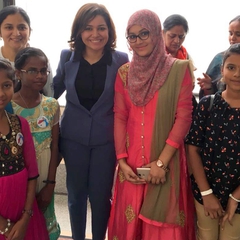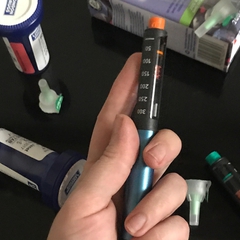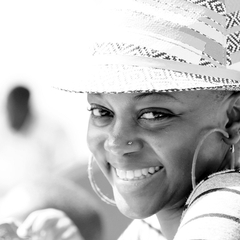Let’s Talk About Inequality (for people with diabetes)
16 Oct 2014, 5:17 p.m. in Global Stories by Elizabeth Pfiester
in•e•qual•i•ty (ˌɪn ɪˈkwɒl ɪ ti)
n., pl. -ties.
1. the condition of being unequal; lack of equality; disparity.
2. injustice; partiality.
After learning about Blog Action Day I knew I wanted to take part, but right away I saw one problem. The theme for the day is ‘inequality’. When it comes to life with diabetes around the world, I thought, the word inequality is simply not strong enough.
While inequality certainly describes what many people living with diabetes in some parts of the world face daily, it does not fully exemplify the struggles and horror faced by someone who does not have access to their insulin, blood glucose monitoring supplies, or other essential diabetes needs. It does not satisfactorily illustrate the fear of high and low blood sugars – which can cause dangerous levels of toxic acid in the blood, or seizures and coma – or the threat of not being able to monitor them or understand what causes them to rise or fall.
I decided that injustice is a much more adequate word. Luckily (as seen above), it is synonymous with inequality.
Diabetes is a complex condition that cannot be cured and requires 24-7 management and continuous access to vital medicine and supplies. Without these supplies and a thorough understanding of the condition (along with regular management of blood sugar levels) a person with Type 1 diabetes will die. Therefore, a diagnosis of Type 1 diabetes in some resource-poor settings throughout the world means that the person may only have a few months left to live. Sometimes people are not even diagnosed with diabetes before their death because health infrastructure is such that no one recognizes diabetes or has the means to treat it.
This is not just a problem in distant, disconnected places. As David Beran and John Yudkin put it in their paper on the topic, “Access to insulin and poor health outcomes are not just problems for low income countries. In the US, insulin discontinuation was the leading precipitating cause of diabetic ketoacidosis, and was responsible for 68% of admissions in a US inner city setting. Among those who stopped taking insulin, 27% reported lack of money to buy it and 5% were making their insulin supplies last longer by taking smaller doses.”
So I ask, how much more unequal and unjust could this situation be? The International Diabetes Federation’s Diabetes Atlas (Sixth Edition, 2013) estimates that there are may be just under a million children and young adults (up to age 25) living with Type 1 diabetes. Lack of data makes these numbers uncertain because, as I said, many people die before diagnosis. Still, that’s a large number. More importantly, a 2011 IDF statement noted that there are likely at least 80,000-100,000 children at risk from lack of access to insulin. That’s a pretty big number, too, but a tackle-able one. Programmes like Life for a Child (LFAC) exist to support children in the developing world with their vital medicine, but after a certain cut-off age they no longer receive free insulin and blood testing supplies. My friend in Togo, for example, is now too old to receive insulin since January.
This inequality – or shameful injustice, as I’ll call it – is simply unacceptable. The LFAC programme can only support about 15,000 children at most. What do the young people do when they are no longer eligible for the assistance? What do adults with Type 1 diabetes do who have lost their job due to the stigma of their diabetes or who must spend up to 75% of their income on their diabetes? LFAC is wonderful, but it’s not enough. A temporary fix is simply not good enough. It is only ‘fixing’ the problem for a portion of the people facing this, and only for a period of time.
The diabetes community and the global community needs to stand and shout about this issue – like we stood together and shouted for HIV/AIDS antiretroviral medicines to be made cheaper and more accessible. The problem of diabetes medicine and supplies may be a smaller scale issue comparatively, but it requires more complex resources and education. It is no less unjust than the more than 10 million unnecessary deathscaused by delayed response and unaffordability of AIDS medication.
It’s not a straightforward problem with a clear-cut answer because insulin price is dictated by pharmaceuticals and generic production of insulin is slim to none. There are a host of other issues like local socio-economic conditions, political complacency or corrupt parties – the list goes on and on. But I would love this Blog Action Day to inspire even a few readers to speak out about these injustices and to join T1International’s efforts.
The ripple has already begun. The more advocates there are for equal access to treatment and care for all people with diabetes, the more ripples will be flowing out into the world until we have a wave of change-making. Let’s use our compassion, voices and talents to rally to change the status quo!






